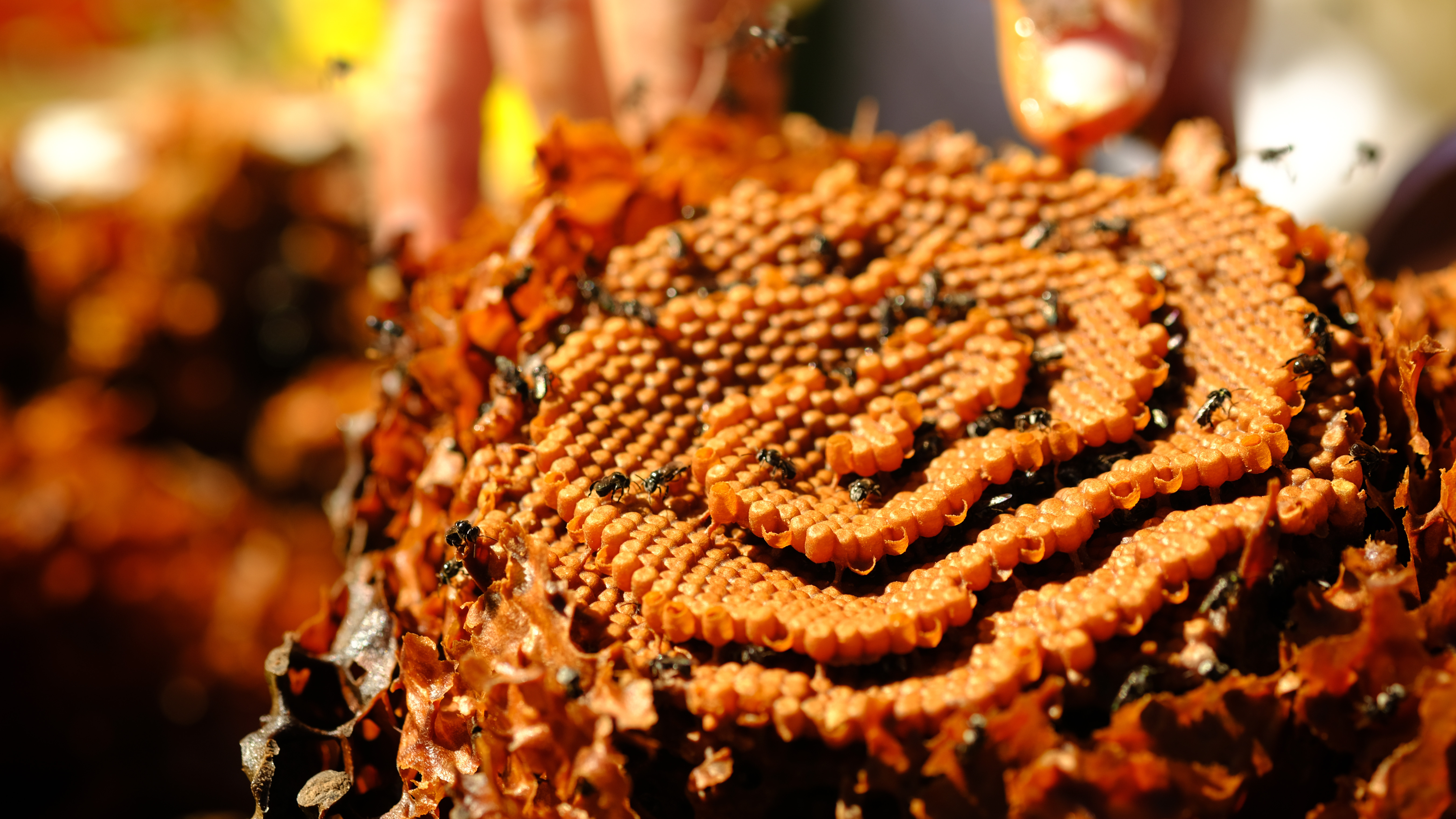Media release
From:
Resistance to synthetic antibiotics poses a critical global health challenge. Various European honeybee and other natural products have been proposed as novel therapeutic agents to address this problem. However, little has been known about the potential of Australian native bee honey as an antimicrobial agent.
A study led by Dr Kenya Fernandes from the University of Sydney has now demonstrated the remarkable antimicrobial properties of honey produced by three species of native Australian stingless bees: Tetragonula carbonaria, Tetragonula hockingsi, and Austroplebeia australis.
Commonly referred to as “sugarbag bees”, the honey from these species has historically served as a food source. It is also a traditional remedy for ailments like itchy skin and sores among Indigenous communities in Australia.
The new research reveals stingless bee honey possesses antimicrobial properties that remain effective even after heat treatment and long-term storage. These distinctive features set it apart from honey from honeybees, highlighting its potential as a sustainable, natural agent for combating drug-resistant infections.
The study has been published in Applied and Environmental Microbiology, published by the American Society for Microbiology.
Dr Fernandes said: “Given the growing medical challenge of antimicrobial resistance, our findings suggest stingless bee honey could complement, or provide a valuable alternative to, synthetic antibiotics.”
Unlike honey from the European honeybee (Apis mellifera), which often relies on hydrogen peroxide for its antimicrobial effects, the honey from Australian stingless bees exhibits high levels of both hydrogen peroxide and non-peroxide activity – making it robust and versatile as a potential therapeutic agent.
The research found when hydrogen peroxide was removed the honey displayed antimicrobial activity, suggesting this is intrinsic to the honey itself.
Dr Fernandes said: “Manuka honey from honeybees displays strong non-peroxide antimicrobial activity, which is one reason why its production has been a commercial success. However, that is largely reliant on the source of its nectar from specific myrtle plants (Leptospermum).
“In contrast, the persistent antimicrobial activity of heat-treated, non-peroxide honey from stingless Australian bees across diverse locations and nectar sources suggests there is something special about these bees, rather than just nectar, that plays a critical role here.”
Co-author Professor Dee Carter said: “We discovered the antimicrobial activity is consistent across all sugarbag samples tested, unlike honeybee honey, which can vary significantly based on seasonal changes and floral sources.”
The researchers hope this consistency could enhance the potential for commercial medical applications.
However, challenges remain concerning scalability. Each stingless beehive produces about half a litre of honey a year, presenting a challenge for large-scale production.
Co-author Dr Ros Gloag said: “While the yield is small, these hives require less maintenance than traditional beehives, allowing beekeepers to manage larger numbers. With proper incentives, such as commercial value for the honey, it's feasible to cultivate more hives, providing a pathway for commercial scalability.”
Encouragingly, native stingless bee honey last year gained approval from Food Standards Australia New Zealand, paving the way for national and international commercialisation. This regulatory support holds promise for the establishment of a niche market for high-value, small-quantity products.
The antimicrobial properties of stingless bee honey have garnered attention not only for their effectiveness but also for their potential stability over time. Furthermore, earlier studies have highlighted that microbes generally do not develop resistance to honey, unlike conventional antibiotics that often operate on a singular mechanism. This offers a compelling argument for incorporating stingless bee honey into therapeutic frameworks, the researchers say.
The research team aims to explore non-peroxide activity further to understand its sources and implications.
Dr Fernandes said: “While we have yet to test the honeys against drug-resistant bacteria specifically, the presence of multiple antimicrobial factors significantly reduces the likelihood of resistance developing.”
Dr Fernandes is an Australian Research Council DECRA Fellow in the School of Life and Environmental Sciences at the University of Sydney. She is also a member of the Sydney Infectious Diseases Institute and the Centre for Drug Discovery Innovation.
Multimedia





 Australia; NSW; QLD
Australia; NSW; QLD


